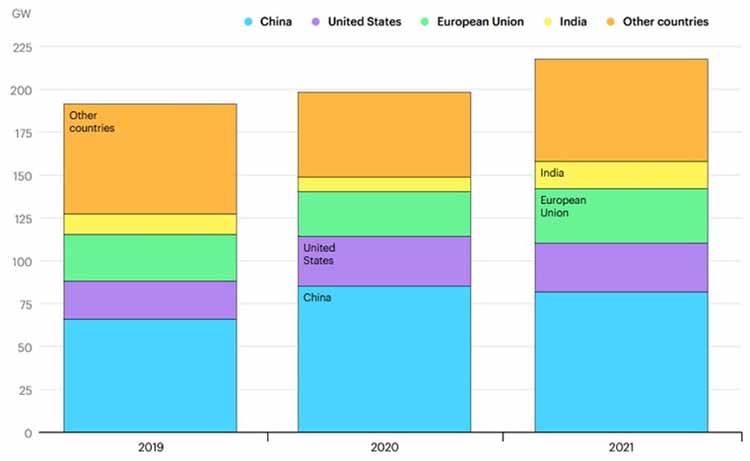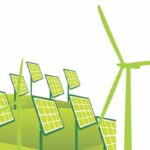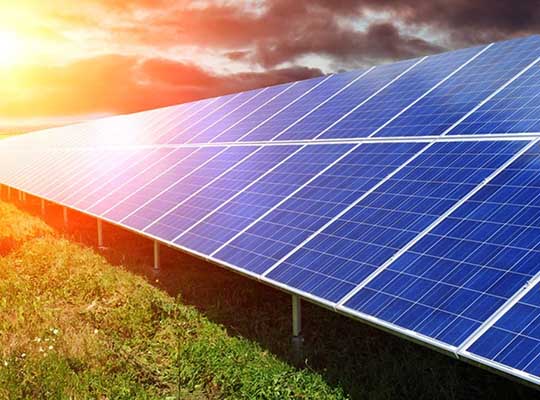The goal is to mitigate carbon emission, in recent global meetings, leaders congregated to share a large voice for Alternative and Renewable Energy. UK has made sure to make vehicles driven by gasoline illegal after 2030. This shows the strict actions global leaders are poised to undertake and promote Alternative and Renewable Energy. Though, many still gets confused between the differences of Alternative and renewable Energy. For starters, alternative energy is not infinite in supply like renewable energy, which, as the name suggests, is always available, similar to solar energy.
Exploring the Difference Between Alternative and Renewable Energy
- Firstly, renewable energy comes from a source that is naturally occurring and replenishes naturally without the interference of human intervention. Examples of renewable energy include biomass resources, solar energy, wind energy, geothermal and hydro resources. The most abundant of these resources is solar energy. If you think about it, it makes sense. The sun is always shining at some point everywhere on Earth, making it the most abundant to harness. Solar power also has the least negative effects on the atmosphere, wildlife and the environment.
- Alternative energy does not include solar power, but includes resources like natural gas (often obtained from fracking or the injection of pressure in subterranean rock crevices), natural gas cogeneration, fuel cells or any waste energy that does not naturally replenish but emits lower carbon emissions. Oil is not considered an alternative energy resource as it is the leading cause of carbon emissions and does not naturally replenish. Earth’s oil reserves will eventually diminish; albeit, it may take centuries.
Impact of COVID-19 on Renewable Energy
The COVID-19 pandemic has disrupted economies around the world, forcing both governments and companies to downsize budgets, shift priorities, and delay capital projects. The renewable energy sector has, like nearly every other, been impacted by the global crisis, according to the International Energy Agency, an intergovernmental organization focused on energy issues. Prior to the pandemic, 2020 was set to be a record year for new renewable energy capacity — meaning the amount of new solar panels, wind turbines, and other sources of energy installed around the world. But the pandemic has disrupted supply chains, causing construction projects to be slowed down or delayed. Growing financial uncertainty, meanwhile, has further postponed projects. IEA estimates that renewable energy generation will grow by 5% this year — the only source of energy production with an upward trajectory. The world currently gets about a third of its energy from renewable sources.
As economies begin to recover from COVID-19, governments can shape stimulus packages and broader economic plans to accelerate the growth of renewable energy and lock in decreasing greenhouse gas emissions.
Storage Will Be Pivotal
For years, storage has been an expensive deal when it comes to energize Renewable Energy. But its advanced technology and innovation in this segment, the future seems to be favorable for renewable Energy. Wind turbines and solar panels generate energy based on weather conditions, unlike fossil fuels that can be burned at any time. As a result, there are surges and dips in energy production that don’t always correspond to energy demand, and energy generated from renewable sources must be stored in batteries. In the past, insufficient storage capacity and poor storage options have limited the potential of renewable energy, while being prohibitively expensive. Going forward, the costs of renewable electricity storage are expected to continue to decline, allowing for greater storage capacity, while new forms of storage are emerging, including “flow batteries” that have a longer lifespan than the standard lithium-ion batteries.
Decentralizing Renewables of Future
The supply of energy around the world is dominated by centralized grids that are prone to blackouts and infrastructure damage. At the same time, 940 million people lack access to electricity. In the years ahead, the decentralization of energy grids will help countries reduce their emissions by prioritizing renewable forms of energy and “leapfrogging” fossil fuels. Decentralized systems can also help countries better adapt to natural disasters, public health emergencies, and other crises that are becoming increasingly common as climate change intensifies. Because of the COVID-19 pandemic, greenhouse gas emissions will decline by up to 10% in 2020, the sharpest annual drop in recorded history. While emissions will rebound in the years ahead, countries can make sure they never exceed 2019 levels by capitalizing on the trends above. That in and of itself would be transformative. Previous estimates suggested emissions would peak around 2030 and then begin a gradual decline.
Keeping an Eye on India
Given the trend and policies integrated, India is shaping as a major market for Renewables. With all GigaWatt dreams, India is already into the stream of success of making it a reality.

leading to the fastest growth since 2015. First, the commissioning of delayed projects in markets where construction and supply chains were disrupted. Prompt government measures in key markets – the United States, India and some European countries – have authorised developers to complete projects several months after policy or auction deadlines that originally fell at the end of 2020. Second, growth is set to continue in 2021 in some markets – such as the United States, the Middle East and Latin America – where the pre-Covid project pipeline was robust thanks to continued cost declines and uninterrupted policy support.
India is expected to be the largest contributor to the renewables upswing in 2021, with the country’s annual additions almost doubling from 2020. A large number of auctioned wind and solar PV projects are expected to become operational following delays due not only to Covid-19 but also to contract negotiations and land acquisition challenges reports iea.org.
Renewables are Electricity of Future
Renewables will overtake coal to become the largest source of electricity generation worldwide in 2025. By that time, they are expected to supply one-third of the world’s electricity. Hydropower will continue to supply almost half of global renewable electricity. It is by far the largest source of renewable electricity worldwide, followed by wind and solar PV. Cost reductions and sustained policy support are expected to drive strong renewables growth beyond 2022. Despite the challenges emerging from the Covid crisis, the fundamentals of renewable energy expansion have not changed. Solar PV and onshore wind are already the cheapest ways of adding new electricity-generating plants in most countries today. In countries where good resources and cheap financing are available, wind and solar PV plants will challenge existing fossil fuel plants. Solar projects now offer some of the lowest-cost electricity in history. Overall, renewables are set to account for 95% of the net increase in global power capacity through 2025. Driven by China and the US, new additions of renewable power capacity worldwide will increase to a record level of almost 200 gigawatts this year, the IEA’s Renewables 2020 report forecasts.
This rise — representing almost 90 per cent of the total expansion in overall power capacity globally — is led by wind, hydropower and solar PV. Wind and solar additions are set to jump by 30 per cent in both the US and China as developers rush to take advantage of expiring incentives.













